
views
- “Yeah, no” is a casual interjection that may signal agreement, disagreement, hesitation, or mixed feelings—depending on the context of the conversation.
- “Yeah, no” is also used to change topics or clarify a previous point during a conversation. Reserve it for casual conversations with your loved ones.
- You might say, “Yeah, no, I agree with you, but…” to express disagreement or mixed feelings, or “Yeah, no, I totally agree with you…” to show solidarity with someone.
“Yeah, No” Meaning
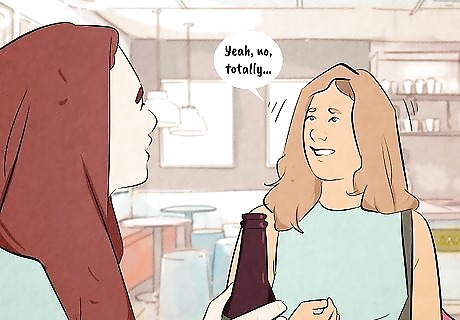
“Yeah, no” is a filler phrase that often signifies agreement or disagreement. Used over text and in person, “Yeah, no” is another way of saying “um” or “mm-hmm.” People generally use it to elaborate on what someone has just said, but the exact meaning depends on their tone and the context of the conversation. Since “Yeah, no” is a slang expression, reserve it for casual exchanges with friends, family members, or your significant other. For example, if someone looks hesitant and says it as an exaggerated “Yeaaah no,” it probably means “No.” If they nod their head or say an affirming phrase right after it (like “Yeah, no, totally…”), it probably means “Yes.”
When & How to Use “Yeah, No”
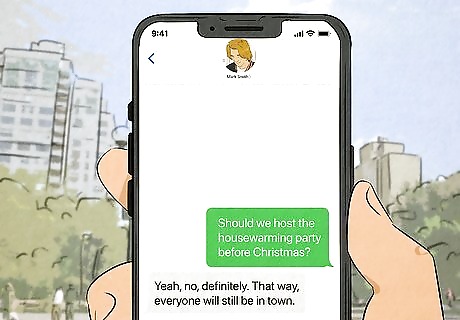
Use “Yeah, no” to indicate agreement with someone. Trying to express solidarity with someone? Say “Yeah, no” to signal that you agree with their opinion, and follow up with a “Totally” or “Definitely” to ensure they understand your intentions. Them: “What do you think about the situation?”You: “Yeah, no, I totally agree with your POV.” Them: “Should we host the housewarming party before Christmas?”You: “Yeah, no, definitely. That way, everyone will still be in town.” Them: “Do you think we should move?”You: “Yeah, no, I definitely think we should. We could get a way better deal living in Long Island City than Manhattan.”

Use “Yeah, no” to indicate disagreement with someone. In this case, “Yeah, no” is used to acknowledge what the other person is saying before giving them a serious “No.” Think of it as saying “Yeah, I hear you, but no, I disagree with you.” Them: “Are you going to the party?”You: “Yeah, no, I have beef with the host.” Them: “I thought you had plans tonight.”You: “Yeah, no. I’m just chilling at home.” Them: “Didn’t you say you wanted the lemon pepper wings?”You: “Yeah, no. That’s the worst flavor, dawg.”
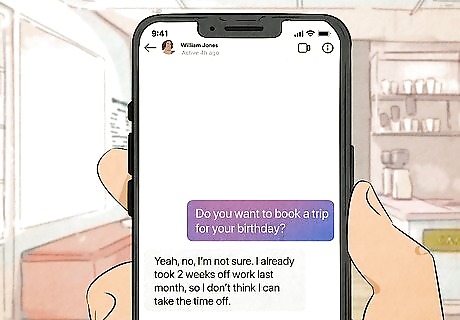
Use “Yeah, no” to signal hesitance or mixed feelings. If someone asks you for your opinion but you don’t agree with them entirely, respond with “Yeah, no” to be polite. It communicates that you understand where they’re coming from, but you don’t fully support their perspective or behavior. Them: “Should we try a different approach?”You: “Yeah, no, I think that could be helpful, but I’m not sure if we should switch things up right before a deadline.” Them: “Do you want to book a trip for your birthday?”You: “Yeah, no, I’m not sure. I already took 2 weeks off work last month, so I don’t think I can take the time off.” Them: “Do you think I overreacted?”You: “Yeah, no, I get how you feel, but I think you could have communicated better. Maybe you should apologize for yelling at him, then see where things go from there.”
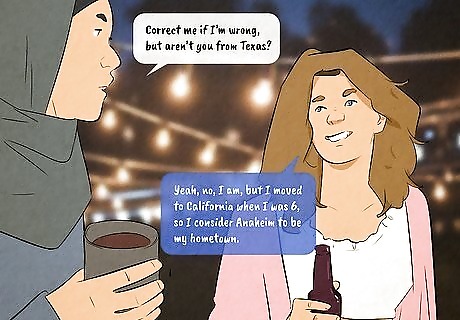
Use “Yeah, no” to clarify an earlier point in a conversation. If someone asks you a follow up question about something that you mentioned earlier, use “Yeah, no” to elaborate on what you said. It’s an easy way to address any previous points and make sure everyone heard you correctly. Them: “Didn’t you say you were going on a diet?”You: “Yeah, no, I did, but I still have cheat meals every once in a while.” Them: “Didn’t you already visit Niagara Falls?”You: “Yeah, no, I did, but I haven’t gone in the spring. I heard that’s the best time, so I’m down to go again.” Them: “Correct me if I’m wrong, but aren’t you from Texas?”You: “Yeah, no, I am, but I moved to California when I was 6, so I consider Anaheim to be my hometown.”

Use “Yeah, no” to change the topic during a conversation. Running out of things to say? Use “Yeah, no” to switch subjects and keep the conversation going. It’s the perfect strategy to avoid an awkward pause and foster a friendly discussion. “Yeah, no, I love strength training, but my favorite workout is Pilates. Have you taken a class before?” “Yeah, no, but that’s awesome that you’ve traveled to so many places. What’s the next city on your bucket list?” “Yeah, no, I’m not a fan of matcha either. Have you tried drinking tea to improve your energy levels? Apparently, black tea has the highest caffeine content.”
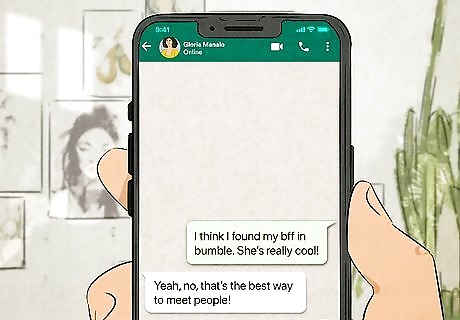
Use “Yeah, no” to express enthusiasm about the topic. If you don’t know what else to say, use “Yeah, no” to indicate that you’re actively listening to the other person. It’s an easy way to engage in the conversation, especially if there’s not much you can talk about. “Yeah, no, that’s so cool to hear!” “Yeah, no, space is so fascinating!” “Yeah, no, that’s the best way to meet people!”

Use “Yeah, no” to accept and deflect a compliment. In Australia, the phrase “Yeah, no” is frequently used to minimize or downplay a compliment. Feel free to use it if you feel shy or uncomfortable when other people give you praise. Them: “You have such a cute nose.”You: “Yeah, no, I’m just really good at contouring.” Them: “Wow, your ideas are so unique!”You: “Yeah, no, I definitely get inspiration from other people.” Them: “Your parents must be so proud of you.”You: “Yeah, no, they’re super supportive, but I still feel embarrassed showing them my work.”
Origin of “Yeah, No”

The expression “Yeah, no” may stem from Australia. While the exact origin of “Yeah, no” is unknown, the earliest discussions of the phrase were published by Australian researchers in 2002. Aussies typically use the phrase to indicate agreement with someone, then add more information to either clarify or amplify a previous statement. “Yeah, no” is especially popular in New Zealand, South Africa, and California.
“No, Yeah” Meaning

“No, yeah” is an interjection that may signal agreement or disagreement. While the meaning of “No, yeah” depends on the speaker’s tone and the context of the conversation, it’s usually a filler phrase that indicates agreement or disagreement. Many people think the “No” is used to acknowledge what someone is saying, while the “Yeah” is used to clarify their point or add more information. Similar to “Yeah, no,” reserve “No, yeah” for casual conversations. “No, yeah, it’s way too cold for poke. We should grab ramen instead.” “No, yeah. I think you’re onto something, but we should also have some backup options just in case something goes wrong.” “No, yeah, you had every right to walk out of the room when he started yelling at you. Everyone deserves respect, even if they don’t agree with you entirely.”














Comments
0 comment